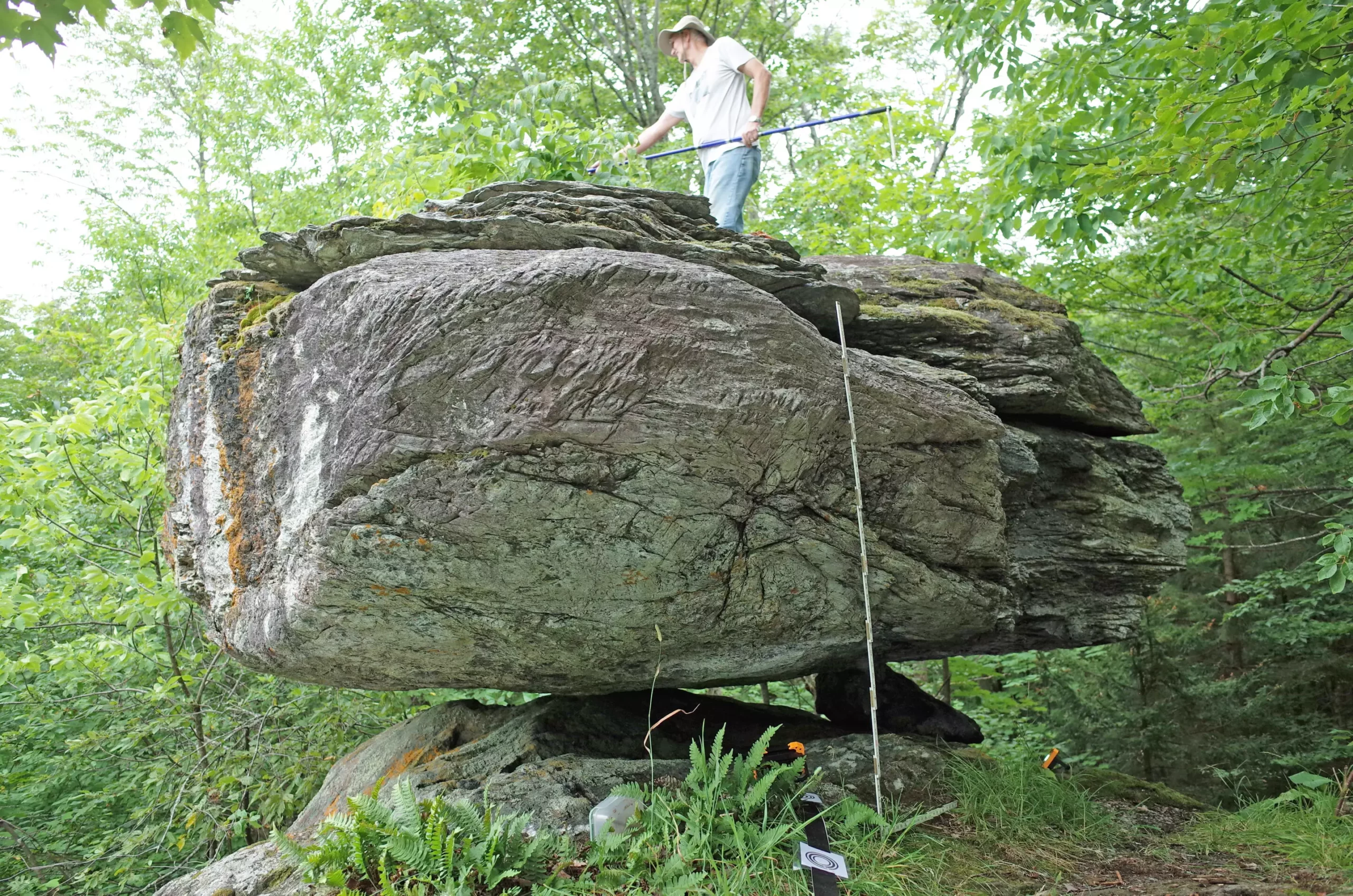In regions where geological forces collide, understanding the intricacies of seismic hazards becomes not only significant but essential. This is particularly true for northern New York and Vermont, where five precariously balanced rocks (PBRs) have presented an intriguing opportunity for seismologists. Delivered by ancient glaciers and perching on rocky platforms, these boulders serve as valuable indicators of long-term earthquake intensity in a region not typically recognized for its seismic activity. The critical examination of these rocky anomalies enables researchers to infer the shaking intensity required to dislodge them, offering insights into historical and potential future earthquake events.
The analysis conducted by seismologists like Devin McPhillips and Thomas Pratt leverages the unique properties of these glacial erratics. The rocks, positioned in precarious equilibrium, reveal crucial data about the seismic environment. By measuring the lithological characteristics and the fragility of these boulders, scientists can establish correlations to past seismic events, thereby offering a glimpse into a region’s earthquake history and potential hazards.
In the comprehensive study published in the Bulletin of the Seismological Society of America, the authors propose that their findings align closely with the U.S. Geological Survey’s (USGS) 2023 National Seismic Hazard Model. This model predicts certain levels of ground shaking across various regions based on historical data and geological formations. Notably, one particular boulder located on Blue Ridge Road in New York indicated a lower-than-expected seismic risk in the vicinity. This anomaly has significant implications, suggesting that areas within the Adirondack Mountains and the southern Lake Champlain valley could be spared from potential major seismic events, such as magnitude 7.0 earthquakes.
Nevertheless, the overall data amassed from the other PBRs still supports the possibility of a magnitude 6.5 to 7.0 earthquake impacting parts of the northern Adirondacks or Lake Champlain valley. Such delineation is vital for risk assessment, emergency preparedness, and refining the seismic models that govern our understanding of earthquake hazards in this sparsely populated region.
Significantly, the research did not occur in a vacuum. The rugged terrain and dense forestation of the area posed substantial difficulties in locating these fragile PBRs without local guidance. McPhillips cites how collaborations with local experts and enthusiasts facilitated the discovery process, with specific references to resources like hiking guides that highlighted unusual geological features. Such community involvement underscores the necessity of utilizing diverse perspectives to advance scientific understanding, especially in fields like geology where localized knowledge can prove indispensable.
Once identified, the PBRs were thoroughly evaluated using advanced techniques including ground-based lidar and seismic response analysis. This rigorous examination allowed researchers to quantify the rocks’ vulnerability to shaking, contributing significantly to a more accurate seismic hazard assessment. By meticulously calculating the probability of rock toppling under specific conditions, the researchers rendered tangible metrics that are crucial for forecasting seismicity in the region.
It’s essential to contextualize these findings within the broader historical framework of seismicity in northeastern North America. The region has a noteworthy history of earthquakes, with significant events recorded as far back as the 17th century. Earthquakes such as the 1944 Massena quake and the 2002 Au Sable event reaffirm that while the northeastern U.S. may not frequently experience earthquakes of substantial magnitude, the possibility remains.
The researchers affirm that the data obtained from the PBR study align favorably with historical seismic evidence. McPhillips expresses optimism for future research avenues, suggesting that additional PBRs could be identified and assessed, thereby enhancing the predictive capacity for seismic hazards even further.
In wrapping up, the exploration of precariously balanced rocks in northern New York and Vermont exemplifies a novel approach to understanding earthquake hazards. By harmonizing local geological studies with historical seismic data, seismologists are not merely mapping the earth’s past; they are laying the groundwork for informed disaster preparedness in a region poised to expand its understanding of earthquake risks. As research in this area matures, the need for continued investigation into PBRs and other geological indicators will only grow, underpinning the interplay between nature and our understanding of it.


Leave a Reply